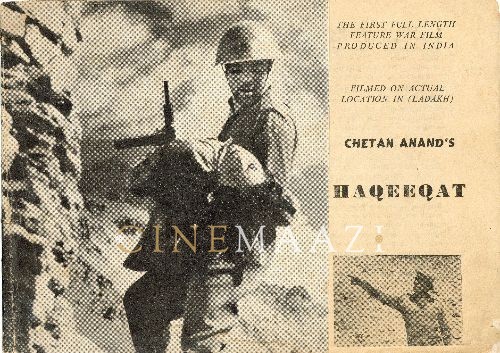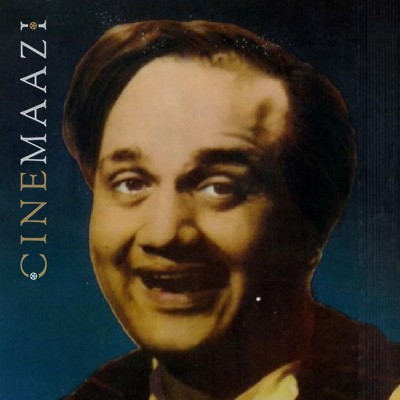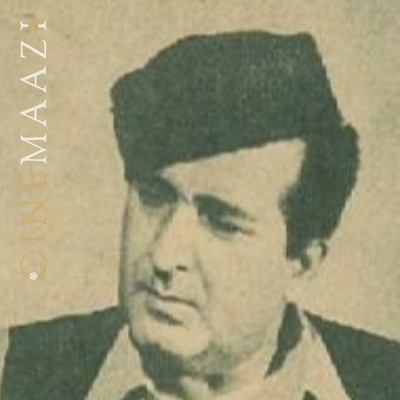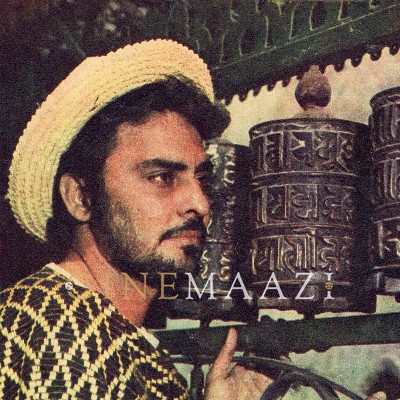Priya Rajvansh

Subscribe to read full article
This section is for paid subscribers only. Our subscription is only $37/- for one full year.
You get unlimited access to all paid section and features on the website with this subscription.
Not ready for a full subscription?
You can access this article for $2 , and have it saved to your account for one year.
- Real Name: Vera Sunder Singh
- Born: 30 December, 1936
- Died: 27 March, 2000 (..)
- Primary Cinema: Hindi
- Parents: Sharda Sunder Singh and Sunder Singh
Known for her classic beauty and aristocratic dignity which marked her presence onscreen, Priya Rajvansh is memorable for films such as Haqeeqat (1964), Heer Raanjha (1970), Hindustan Ki Kasam (1973), Hanste Zakhm (1973), Saheb Bahadur (1977), Kudrat (1981) and Haathon Ki Lakeeren (1986). Though she had just seven films to her credit over the course of a 22-year-long career, she carved a prominent niche for herself. Muse and partner of well-known filmmaker Chetan Anand, she chose to work exclusively with him, reportedly turning down offers from Raj Kapoor and Satyajit Ray. She was also involved in other aspects of filmmaking besides acting, also co-writing the scripts of films such as Kudrat and Haathon Ki Lakeeren. A reserved individual, she shunned the limelight beyond her professional duties. Exclusive, sophisticated and elegant, her charisma was palpable. Some of the popular songs picturised on her include Zara si aahat hoti hai (Haqeeqat), Milo na tum to hum ghabhraye (Heer Ranjha), Betaab dil ki tamanna (Hanste Zakhm), Aaj socha to aansoo bhar aaye (Hanste Zakhm), and Hai tere saath meri wafa (Hindustan Ki Kasam).
Born Vera Sunder Singh on 30 December, 1936, she excelled at her school, Auckland House, in Shimla, where she was born and grew up. Moving to London after her father was transferred to the city as a forest conservator by the United Nations, she was well-educated and well-read. She also had world exposure, accompanying her father Sunder Singh, an IAS officer, to places like Beirut and Venice. She was always interested in pursuing acting as a career.
Incidentally, it was Chetan Anand’s wife Uma who apparently helped Rajvansh make her debut in films. Impressed by her performance at a function in Chandigarh, Uma had given her Chetan Anand’s card, asking her to contact him. However, soon after, she enrolled at the prestigious Royal Academy of Dramatic Art (RADA) in London. She was, in fact, the only Indian heroine from RADA at the time. On completing her course, she mailed her pictures to Chetan Anand—brother of famous star Dev Anand, and director Vijay Anand—who was scouting for a new actress to play Heer in his tale of doomed love - Heer Ranjha. One look at her pictures, and he telegrammed her, ‘Come to Bombay immediately!’ Heer was hers.
However, as the production of Heer Raanjha was delayed, she went on to make her debut in Chetan Anand’s Haqeeqat (1964) instead, alongside Dharmendra and Balraj Sahni. Considered by many as one of the best war films to have been made in India, it was based on the events of the 1962 Sino-Indian War about a small platoon of soldiers in Ladakh pitched against a much more powerful adversary. Constructed around the battle of Rezang La in Ladakh, it showcased a fictionalised version of the last stand of Ahir Company, 13 Kumaon led by Major Shaitan Singh. More importantly, the film is a dramatic retelling of the impact of war on the common soldier. With music by Madan Mohan and lyrics by Kaifi Azmi, it won the National Film Award for Second Best Feature Film in 1965. Rajvansh essayed the role of Angmo, who is raped by an enemy soldier, and goes on to kill a number of enemy soldiers, thus avenging the violation of her body, and her territory, before dying. Her performance won applause.
More recognition came with her second film, the box office hit Heer Raanjha (1970). Based on the popular Punjabi folk tale and written entirely in verse by Kaifi Azmi, this romantic musical directed by Chetan Anand saw her paired opposite Raaj Kumar. It was based on the legend of Heer Ranjha, the epic poem Heer by Punjabi poet, Waris Shah, written in 1766. The film was also notable for its music, dialogues, and photography by Jal Mistry, which won the Filmfare Award.
Her next release Hindustan Ki Kasam (1973), revolved around the 1971 India-Pakistan war. This Chetan Anand directorial was apparently based on Operation Cactus Lilly. The film is considered different from other war films in Indian cinema as it vividly describes the IAF's role in the 1971 Indo-Pakistani war in the western sector. Though it didn't perform well commercially, it was evidence of the filmmaker’s pursuit of cinematic excellence. She essayed a double-role in the film; one of her characters being a spy who is deliberately planted in Pakistan by the Indian forces to retrieve sensitive information.
The Chetan Anand directorial Hanste Zakhm (1973) saw her as part of the cast comprising Navin Nischol, Balraj Sahni and Jeevan. The film had acclaimed music composed by Madan Mohan with lyrics written by Kaifi Azmi, including the evergreen hits Tum jo mil gaye ho, and the qawwali Yeh maana meri jaan. She essayed the role of Chanda/ Meena (Minno) in the film, which was a hit at the box office.
Saheb Bahadur (1977) saw her star opposite Dev Anand in a hilarious tale of corrupt government officials who are compelled to portray themselves as honest and law-abiding citizens.
She featured in the 1981 drama Kudrat (1981), which starred Rajesh Khanna, Hema Malini, and Vinod Khanna. Revolving around a reincarnation theme, the film was a box office hit and also won the Filmfare Award for Best Story.
Haathon Ki Lakeeren (1986) was her last release. The cast comprised Sanjeev Kumar, Zeenat Aman, Jackie Shroff, and herself in pivotal roles. She also penned the story of this drama film revolving around the rightful custody of a child. It was her last appearance onscreen.
She was fondly nicknamed ‘Queen Elizabeth’ by her close friends, a nod to her ‘royal’ demeanour and anglicised accent. She was known to prefer to discuss George Bernard Shaw and enjoy Urdu mushairas. With an intellectual bent of mind, she enjoyed all things connected with art and culture.
She had become close to Chetan Anand, who separated from his wife, from the time of Heer Ranjha in 1971. He was 16 years her senior. Although they never married, she held an important place in Anand’s life, and their relationship lasted several decades. She was deemed his companion and true soulmate.
Priya Rajvansh was murdered on 27 March, 2000 at Chetan Anand’s bungalow, which had been willed by the late filmmaker to her and his two sons, Ketan and Vivek, after he passed away in 1997. Reports suggest that she wanted to sell the bungalow but differences arose with Ketan and Vivek on this issue. Two years later, on 31 July 2002, the domestic help at the bungalow—Mala Chaudhary and Ashok Chinnaswamy—were convicted of the murder. Chetan Anand’s sons Vivek and Ketan were convicted for plotting to murder Rajvansh, after having been initially absolved of the charges in 2001. The four moved the Bombay High Court in 2002 against the verdict, and were granted bail. In 2011, the high court accepted the appeals filed by the two brothers against their guilty verdict.
-
Filmography (4)
SortRole
-
Saheb Bahadur 1977
-

Hindustan Ki Kasam 1973
-
Hanste Zakhm 1973
-

Haqeeqat 1964
-











.jpg)



